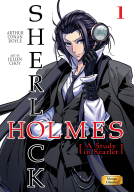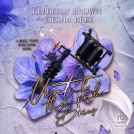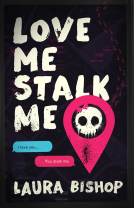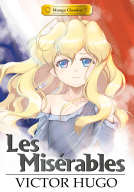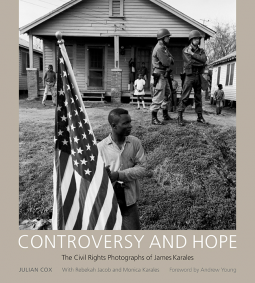
Controversy and Hope
The Civil Rights Photographs of James Karales
by Julian Cox with Rebekah Jacob and Monica Karales
This title was previously available on NetGalley and is now archived.
Send NetGalley books directly to your Kindle or Kindle app
1
To read on a Kindle or Kindle app, please add kindle@netgalley.com as an approved email address to receive files in your Amazon account. Click here for step-by-step instructions.
2
Also find your Kindle email address within your Amazon account, and enter it here.
Pub Date May 15 2013 | Archive Date Jan 08 2015
Description
Controversy and Hope commemorates the civil rights legacy of James Karales (1930–2002), a professional photojournalist who documented the 1965 Selma to Montgomery March for Voting Rights with a dedication and vision that led the New York Times to deem his work "a pictorial anthem of the civil rights movement."
Equipped with ambition and a B.F.A. in photography from Ohio University in 1955, Karales headed to New York and found work as a darkroom assistant to master photographer W. Eugene Smith. Karales's earliest photo-essays had already come to the attention of Edward Steichen, curator of photography at the Museum of Modern Art in New York, which acquired two of Karales's photographs from his series on the Greek American community of Canton, Ohio. Another early photo-essay, on the integrated mining community of Rendville, Ohio, was featured in Karales's first solo exhibition, held in 1958 at Helen Gee's Limelight Gallery in Greenwich Village. From 1960 to 1971, Karales worked as a staff photographer for Look magazine, traveling the world during a time of dynamic social change and recording the harsh realities he witnessed at home and abroad.
By the time Karales documented the fifty-four-mile voting-rights march from Selma to Montgomery, Alabama, in 1965, he had already developed a strong relationship with its most prominent leader, Dr. Martin Luther King Jr., and had been granted unprecedented access to the King family. That connection translated into a powerful empathy in the photographs that still resonates for viewers today.
The Village Voice described Karales's civil rights work as bearing "the weight of history and the grace of art." Controversy and Hope presents many of Karales's images from the era, including some photographs published here for the first time. Julian Cox, with the assistance of Rebekah Jacob and Monica Karales, has selected a bold representation of Karales's photographs, augmenting his visual legacy with biographical information and personal recollections. Civil rights leader Andrew Young, who appears in some of Karales's photographs, has provided a foreword to the volume.
Julian Cox is the founding curator of photography and chief curator for the Fine Arts Museums of San Francisco. For more than a decade Cox worked with the photographs collection at the J. Paul Getty Museum in Los Angeles and then spent five years leading the photography program at Atlanta's High Museum of Art. His previous books include Julia Margaret Cameron: The Complete Photographs; Harry Callahan: Eleanor; Road to Freedom: Photographs of the Civil Rights Movement, 1956–1968; and The Portrait Unbound: Photographs by Robert Weingarten.
Rebekah Jacob is the proprietor of the Rebekah Jacob Gallery in Charleston, South Carolina. She is an expert on the art and photography of the American South and represents a number of eminent Southern artists. Jacob holds undergraduate and graduate degrees from the University of Mississippi and a certificate in appraisal studies in fine and decorative arts from New York University. She is also a certified member of the Appraisers Association of America.
Monica Karales is the widow of James Karales. She was born in Switzerland and raised in Lenzerheide-Valbella, in a picturesque valley in the Swiss Alps. Trained in the visual arts, she met and married James Karales in 1973 and was his constant companion until she was widowed in 2002. Karales has since dedicated herself to preserving her late husband's archive and ensuring that his legacy survives in the form of exhibitions and scholarly publications.
A Note From the Publisher
9 x 10, 176 pages, 121 illustrations
Also available in paperback, $24.95
(978-1-61117-158-7)
9 x 10, 176 pages, 121 illustrations
Also available in paperback, $24.95
(978-1-61117-158-7)
Advance Praise
"I don't know why James Karales had the sensitivity to capture the power and the humanity of our movement. Perhaps it was a sensibility derived from his life as the child of immigrants. Perhaps it was his immersion in the integrated coal-mining community of Rendville, Ohio. Somehow he was not blinded by the color consciousness that was the hallmark of the segregated way of life we were challenging. Through the lens of his camera, Karales recorded the humanity of a people struggling to be free and conveyed that reality to the nation." —Andrew Young, from the foreword
"These photographs by James Karales evoke the power of Walker Evans. Here are rare discoveries mixed with iconic images of U.S. history. Karales was a master. No artist captured more drama, character, and inspiration from the civil rights era."—Taylor Branch, author of Parting the Waters and The King Years
"The visually powerful images in Controversy and Hope reveal formerly unseen glimpses into the 1965 Selma to Montgomery March for Voting Rights, the life of Dr. Martin Luther King Jr., and other civil rights events like no other book I have read. James Karales captured many crucial moments of social change with artistic flair and sensitivity."—Cecil Williams, author ofOrangeburg 1968: A Place and Time Remembered and others
Marketing Plan
No Marketing Info Available
No Marketing Info Available
Available Editions
| EDITION | Hardcover |
| ISBN | 9781611171570 |
| PRICE | $39.95 (USD) |
Links
Average rating from 14 members
Featured Reviews
Title: Controversy and Hope: The Civil Rights Photographs of James Karales Authors: Julian Cox with Rebekah Jacob and Monica Karales Publisher: University of South Carolina Press
In Short: The photographs in this book tell a story of life in the impoverished south and the behind the scenes of the civil rights movement more than it talks about the actual civil rights protests and marches. This is also the story of this one photographer, Karales and how opportunity and skill can position someone to change the world through his/her lens.
My Thoughts: I was expecting the" in your face" violence of some of Bill Hudson's work, like the photo of Parker High School student Walter Gadsen being attacked by a police dog in Birmingham, Alabama. I was even expecting more of the photos like Karales' photo of the march from Selma to Montgomery - the one that is taken from below and shows the mass of faceless people with the dark clouds looming above. The authors do include that. I especially liked the photo of Martin Luther King Jr. speaking from the motel balcony paired with the photo from below of the people listening to him with the story in their faces. However, what struck me about these photos were the intimate storytelling possible when Karales honed his artist eye on small events like Martin Luther King Jr. playing with his daughter in their kitchen. Even more haunting than seeing the violence on the street were the photos Karales took of the non-violent protesters practicing passive resistance training in what looked like a basement in Atlanta. As someone from Hawaii, I also appreciated the photo of Dr. King arm in arm with Rev. Abernathy, Rabbi Eisendrath and Rabbi Heschel, all of them with leis on. For me that was the iconic Dr. King photo when I was a school girl and I'm glad I now know about the life of this photographer.
Readers who liked this book also liked:
Sir Arthur Conan Doyle
Comics, Graphic Novels, Manga, Mystery & Thrillers, Teens & YA

